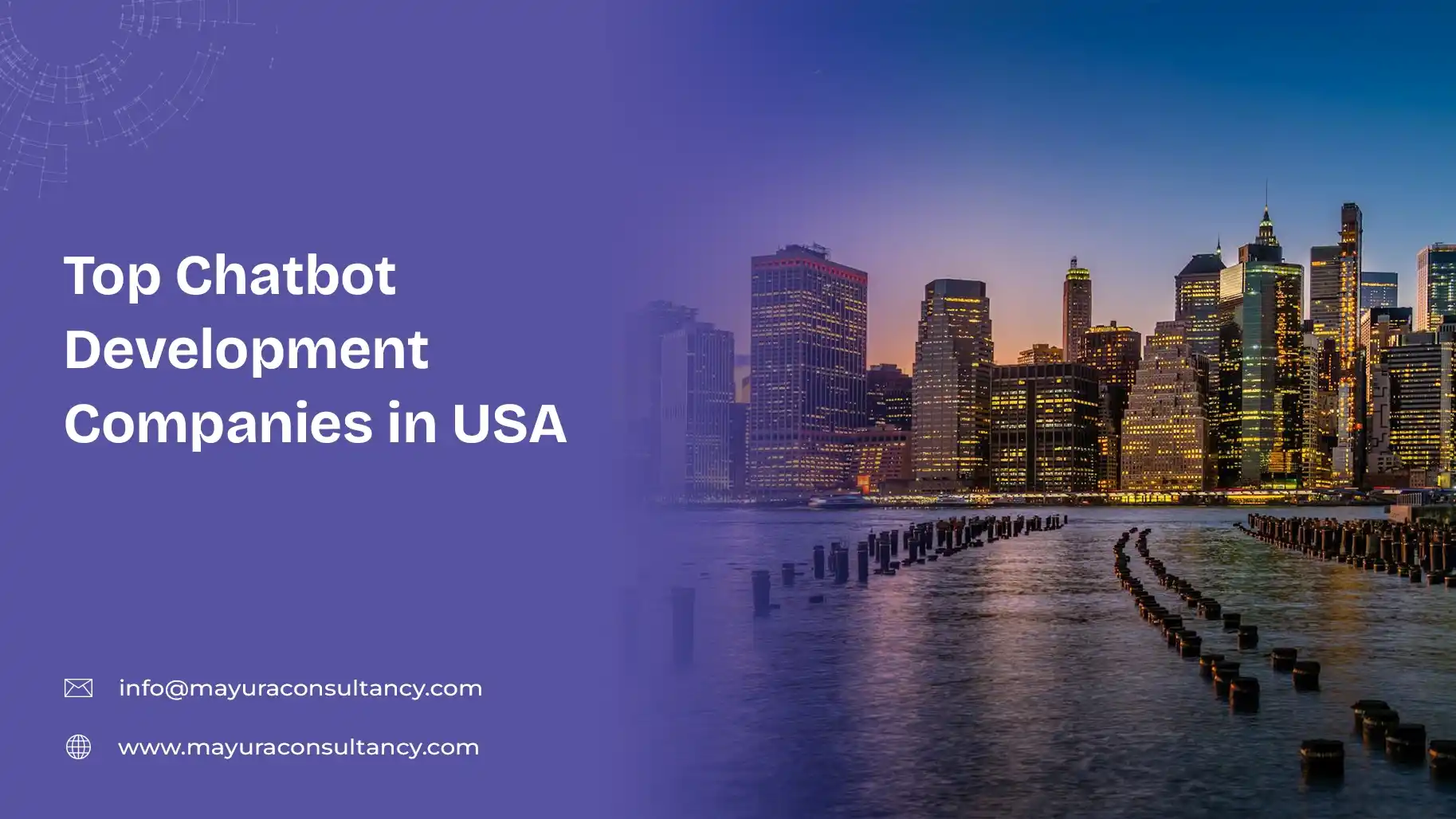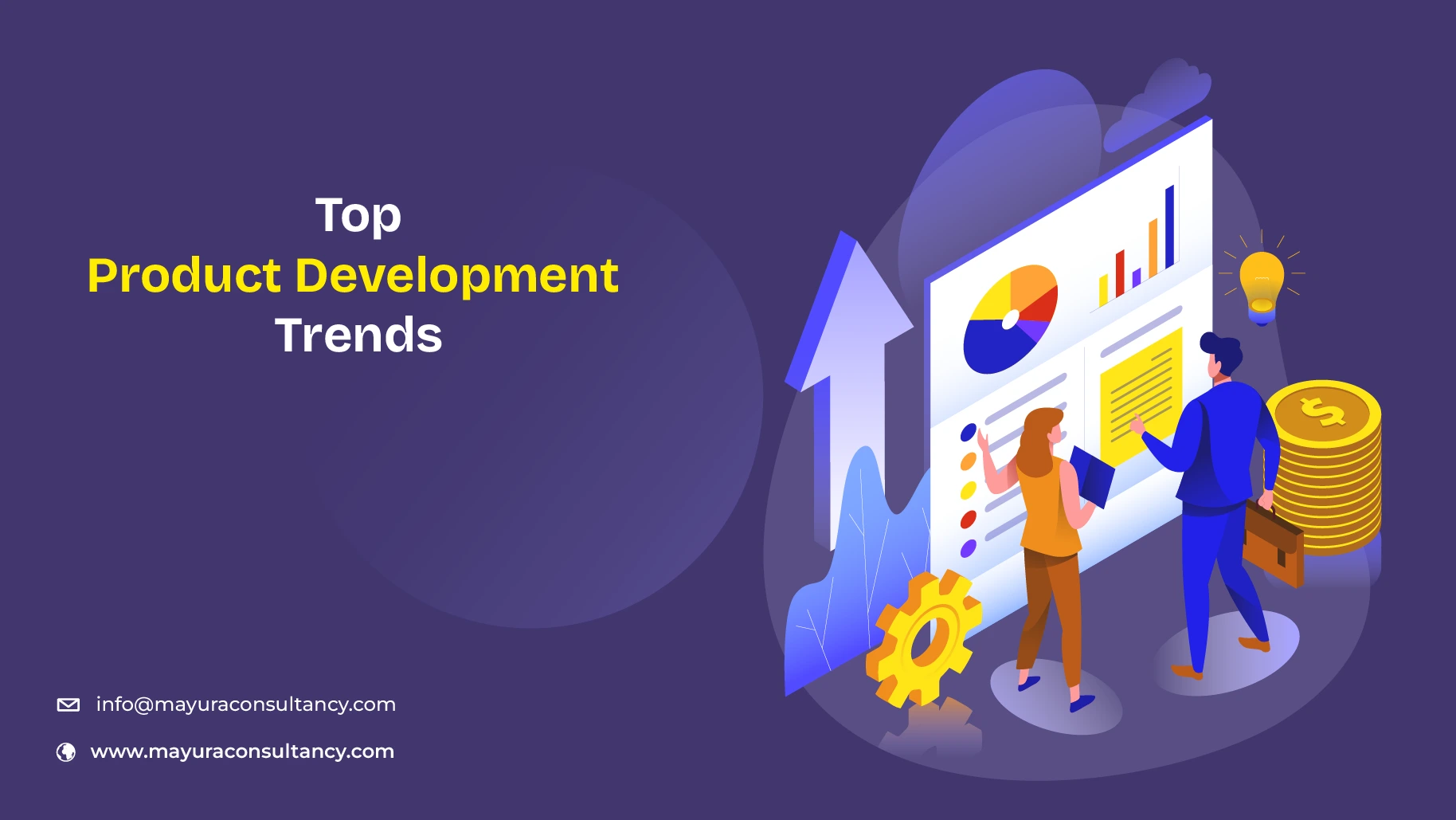With digital transformation, almost every company is using websites and applications to reach their customers and perform various day-to-day operations. This transition has brought in many advantages but posed a major threat in the form of cyber risk. Cyber threats are becoming more sophisticated with the advent of new technologies and traditional security systems are proving ineffective.
So, what is the solution to these challenges? Staying updated with the new cyber threats and adopting the latest cybersecurity trends is the best way to prevent cyberattacks and ensure data security. In this blog, we will explore the top cybersecurity trends 2024 that are transforming cybersecurity.
This Article Contains:
What is Cybersecurity?
Cybersecurity is the practice of protecting computers, servers, networks, mobile devices, IoT devices, data, websites, applications, and other digital assets from unauthorized access, and malicious attacks.
It involves a series of steps, including the implementation of technologies, maintaining software regularly, and following some protocols while accessing and working on digital assets to mitigate threats like phishing, malware, denial-of-service (DoS), ransomware attacks, and others. Besides, trend analysis in cybersecurity can help businesses assess patterns to evaluate threats and take actions to mitigate them.
Cybersecurity is essential to maintain your software in working condition. If you are looking to know more about software maintenance, you can read our blog, The Ultimate Software Maintenance Guide: Tips, Tricks, and Best Practices.
What are the Top Cybersecurity Trends in 2024?
With the increase in new cyber threats, cybersecurity companies are also working on new mechanisms to protect data and prevent cyber attacks. Zero Trust Security, Implementation of AI, and Blockchain are the three top cybersecurity trends in 2024 but some other trends have also emerged. Let us look at the emerging cybersecurity trends many businesses have adopted recently.
1. Growing Focus on Zero Trust Security
Amid the growing threats of cyber attacks, businesses need better cybersecurity solutions and Zero Trust Security has emerged as a reliable solution to this problem. The core principle of Zero Trust security is "never trust, always verify."
Unlike the traditional cybersecurity models that accept data inside an organization's internal network as secure, the Zero Trust model assumes the threat can come from within and outside the organization. It verifies every user and device trying to access resources on the network, regardless of their location.
Zero Trust Security bolsters the security postures of any organization by leveraging continuous verification, least privilege access, network segmentation, and multi-factor authentication. By continuously verifying access requests, Zero Trust significantly reduces the risk of unauthorized access and breaches.
For example, an organization adopting Zero Trust Security requires employees to verify their credentials through multi-factor authentication, such as username, password, one-time password, fingerprint, etc., while trying to access sensitive applications and data. This means even if a hacker gets information about the username, they will face multiple barriers to accessing the information, significantly reducing the chances of damage.
Effective implementation of zero trust requires your software to be tested for cybersecurity. You can check our blog on software testing trends for more insights on the latest software testing trends.
2. Integration of AI and Machine Learning in Cyber Threat Detection
AI and ML integration and cybersecurity are growing, making it one of the latest cybersecurity trends. According to Markets and Markets report, the global AI in cybersecurity market size was valued at $22.4 billion in 2023 and is expected to grow at a CAGR of 21.9% between 2023 and 2028 to reach $60.6 billion.
AI and ML-powered cybersecurity systems can analyze vast amounts of data accurately to predict threats, boosting the early detection mechanism, and enabling businesses to prevent them proactively. Moreover, AI-driven systems can automate responses against threats, minimizing the response time.
Take the example of An AI-powered cybersecurity system for a bank or other financial institution. It can detect an unusual login attempt and automatically flag it for further verification.
Simultaneously, it can analyze transaction patterns to identify potential fraud, initiate prompt action, and prevent unauthorized access and transactions. The combination of real-time monitoring, predictive analytics, and automated response significantly reduces the chances of vulnerability, boosting security.
3. Blockchain in Cybersecurity
Blockchain plays a critical role in cybersecurity and has emerged as one of the recent trends in cyber security. Its decentralized ledger technology and distributed database maintain growing records in blocks that ensure data security, transparency, and immutability.
Unlike traditional databases with a centralized server, blockchain operates on a peer-to-peer network of nodes. Each node holds a copy of the entire blockchain network. This ensures not a single point of failure, increasing system robustness.
Blockchain is widely used across industries, such as finance, cryptocurrencies, logistics, healthcare, and others. In a blockchain-based supply chain system, every participant, such as manufacturer, supplier, distributor, and retailer logs transactions on the blockchain.
For example, the manufacturer records the production date, location, and batch number in a block. As the product moves, other participants also record the date of ownership, creating a transparent and immutable record.
Did you know that blockchain is not only transforming cybersecurity but also software development? Discover how this cutting-edge technology has revolutionized software development in our Top Software Development Trends blog.
4. More Focus on IoT Security
Like 2023, the application of the Internet of Things (IoT) will continue to grow at a breakneck pace in 2024 and beyond. According to a Statista report, the number of IoT connected devices will reach from 15.14 billion to 17.08 billion in 2024 and is projected to reach 29.42 billion by 2030. However, this growth also brings security threats to individual users and businesses.
This large number of IoT devices and their interconnected nature makes them an easy target for cybercriminals. A breach in one device can turn other connected devices vulnerable. That is why IoT security has emerged as one of the top trends of cyber security.
For example, IoT devices and sensors are widely used in critical infrastructure, such as healthcare, power grids, transportation systems, and others. Imagine a cyberattack on a smart grid! It can have catastrophic consequences, leading to a power outage in a large area. This emphasizes the need for robust security measures for IoT devices and implementing the top IoT trends when building IoT applications and devices.
5. Spotlight on Cloud Storage Security
Faster access, cost-efficient services, better productivity, and flexibility have led many businesses to move their IT infrastructure into the cloud in the last few years. However, this shift comes with many cyber security challenges, including reduced visibility and control, vulnerable cloud applications, insufficient access management, Misconfigured cloud settings, vendor lock-in, and many others.
Cloud storage is a prime target for cybercriminals due to the vast amount of sensitive data it holds.
Companies using cloud computing services should implement strict access control, encryption, continuous monitoring, and compliance with data protection laws to ensure security and prevent attacks.
6. Firewall as a Service (FWaaS)
Firewalls as a service (FWaaS) is gaining popularity as one of the top cybersecurity trends due to its flexibility and scalability. It is also a cost-effective alternative for cybersecurity that does not require massive upfront investment in hardware and software.
FWaaS provides a centralized platform that enables businesses to configure and control security issues easily and ensures consistent security policies across all network segments.
This is effective for businesses with a remote work model where employees access company resources from any location and device. With FWaaS, you can manage cybersecurity from a centralized system, which is almost impossible or costly in a traditional firewall system.
7. Adoption of Multi-factor Authentication
There was a time when a password or personal identification number (PIN) was considered safe but with increasing cyber threats and usage of sophisticated technologies by criminals, there is a need for more robust security measures for businesses. This is where the adoption of multi-factor authentication (MFA) comes into play.
It provides an additional layer of security to authenticate the user identity in the form of a one-time password, biometric, face unlock, and voice-based verification apart from the username & password. Many businesses use this method to ensure security.
For instance, financial institutions, healthcare, defense, retail, and many other industries have implemented MFA to boost cybersecurity. According to a Grand View Research report, the global MFA market size is projected to grow at a CAGR of 14.2% between 2023 and 2030.
8. Security of Mobile Devices
Did you know the global number of Smartphone users has reached 4248.04 million in 2023 and is expected to reach 6,377 million by the end of 2029. People across the globe use smartphones for financial transactions, communication, shopping, social media access, home security, content consumption, and many other purposes. This exposes smartphone users and businesses to cyber risks.
With a large number of smartphone users, the security of mobile devices has emerged as a concern. Businesses need to implement robust mobile device security policies to secure sensitive data on these devices.
Consider a bank allowing its employees to use their own devices for work. By implementing Mobile Device Management (MDM), biometric authentication, encryption, and leveraging the latest mobile app development trends for creating mobile applications, they can protect sensitive financial transactions accessed through mobile devices.
Additionally, testing mobile applications is critical for security and performance. Discover the best tools for mobile testing in our Top Software Testing Tools blog.
9. Emphasis on Tackling Social Engineering Tactics
Social Engineering is one of the most common forms of cyber-attacks, and preventing this menace is among the top cybersecurity trends 2024 and upcoming years. Cybercriminals use this technique to manipulate people to reveal sensitive information such as login details, PINs, and one-time passwords and gain access to users' accounts.
Unlike other cybercrimes where criminals use technologies, social engineering involves tricking human beings, making it more concerning. For example, phishing is a social engineering technique where attackers send fraudulent emails or SMS claiming to be from a bank or other service provider.
Once users click that, it takes them to a fake site that looks like the original service provider and tricks them into providing their login credentials and other details, which they can use later to access their original account. Organizations emphasize educating employees and customers to combat social engineering and boost cybersecurity.
10. Deepfakes Prevention
With the advancement in AI and machine learning technologies, deepfake has become a cause of concern impacting individuals and businesses for the last few years. As new and advanced AI tools are coming into the market, it has become easy for people with malicious intentions to manipulate audio and video to create fake content that looks real.
Criminals are also using this technology for social engineering, impersonating individuals, spreading wrong information, and misleading people and businesses.
As the threat is growing exponentially, it can affect businesses in the coming days. Consider a rival brand creating a fake video impersonating a top executive and saying the company is involved in malpractices during manufacturing, damaging the company's reputation badly. Organizations should invest in deepfake detection tools and technologies to prevent reputational damage.
11. Incident Response and Recovery Planning
With the growing magnitude and sophistication of cyberattacks, the need for incident response and recovery planning has become essential for every organization. Implementing robust recovery planning measures significantly reduces the damage and ensures businesses can contain the threat and restore normal operations quickly.
Due to this, it has become one of the latest cybersecurity trends among businesses these days. Consider a situation when an enterprise becomes a victim of a ransomware attack, encrypting critical data and demanding a ransom.
With an effective incident response plan, the company can identify the breach and isolate the affected systems, initiating a recovery process and restoring the data from the backup. An organized response minimizes damages, downtime, and reputational loss.
Top 5 Benefits of Using the Latest Cybersecurity Trends for Businesses?
Using emerging cybersecurity offers many benefits to businesses. Here are the top 5 benefits.
1. Better Protection Against Emerging Threats
Leveraging the latest cybersecurity trends like AI/ML, FwaaS and IoT Security, blockchain technology, etc. empowers businesses to address the most sophisticated and advanced cybersecurity threats including malware, ransomware, phishing attacks, and others. This proactive approach helps in minimizing vulnerabilities and safeguarding sensitive information.
2. Cost Savings
Cyberattacks are not only a threat to data security and privacy but they can cause business disruption, and incur massive revenue loss. Implementing the current cyber security trends enables businesses to reduce the risk of cyber attacks to a great extent, minimizing potential financial damage.
3. Enhanced Customer Trust & Satisfaction
Customer trust is critical for every business, but cyberattacks can cause data leaks and financial damage to customers. Adopting the latest cybersecurity practices safeguards sensitive business data but reflects the company's commitment to protecting its customers' data. It helps in building trust, satisfaction, and customer loyalty.
4. Faster Risk Detection & Response
Integrating AI/ML in cybersecurity systems empowers businesses to identify threats faster than traditional methods. This also helps them initiate action quickly to minimize or prevent damage completely.
5. Competitive Advantage
Cybersecurity is a major concern to every business and customer. By employing the most advanced cybersecurity trends, businesses can earn customers' trust, reduce downtime, and improve operational efficiency to get a competitive advantage.
Wrapping Up
The complexity of the cyber attacks calls for advanced security measures and implementing the most recent cybersecurity trends. Implementing the top cybersecurity trends and partnering with a reputed cybersecurity company can enable businesses to address the rapidly evolving cyber risks.
Mayura Consultancy Services has a proven track record of ensuring robust security for their businesses. If you are looking for a reliable partner to secure your business from the latest cyber threats, MCS is there to help you. Partner with us to build a robust cybersecurity system and get a competitive advantage.
Frequently Asked Questions
Businesses face many cyber risks, but certain threats have emerged recently, including IoT-based attacks, cloud vulnerabilities, mobile device vulnerabilities, ransomware, and social engineering.
Boosting cybersecurity requires you to take a series of steps, including security assessment, encryption, web gateway security, mobile device security, multi-factor authentication, advanced endpoint detection and response. Besides that, you need to leverage the latest cybersecurity trends to boost security.
Here are the steps to ensure compliance with cybersecurity regulations.
Regularly review regulatory updates
Conduct regular risk assessments
Develop a robust incident response Plan
Engage with compliance experts
Continuous improvement
Implementing a robust incident response plan enables businesses to identify and contain cyber risks, minimize damage and downtime, and restore normal operations quickly.







Comments
Share Your Feedback
Your email address will not be published. Required fields are marked *